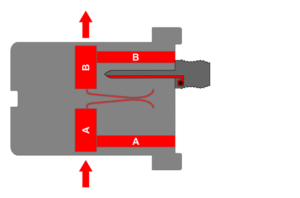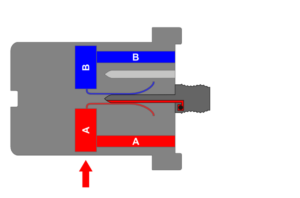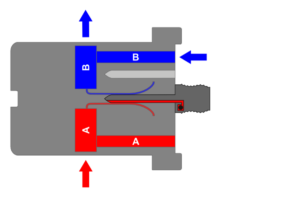The FTL test block is designed specifically for improving safety and facilitating the interface between substation devices, such as protection relays, fault recorders, revenue meters, and various components of the power grid’s system side, including voltage and current transformers.
By utilizing disconnect pins, the FTL test block isolates substation devices from the system side equipment. This isolation enables the execution of secondary injection testing, which can be conveniently performed through the banana jacks located on the front side of the test block.

Closed circuit
A FTL test block contains 8, 10, 12, 14, 16, 18 or 20 modular units (or poles) each allocated to a current, voltage, signal or trip circuit. Each circuit is connected through the block via two silver-plated copper contacts, pressed securely together by two pressure springs to create a highly conductive electrical connection. In this situation, a electrical connection is established between the device side (B) and the system side (A).

Open Circuit
To open one of these modular poles, a disconnect pin is removed from its inactive “parking” position and inserted between the silver-coated copper contacts (the “test” position). In this position, the device and system sides of the test block are isolated from each other. For current circuits, the disconnect pins include internal shorting bridges. When the pin is moved back to the “parking” position, the internal springs force the contacts back together, returning the circuit to its normally-closed position. There is no in-between position, completely eliminating the risk of accidents resulting from improperly closed circuits.

Signal Injection
When the disconnect pin is in the “test” position, a banana jack is accessible on the device side of the test block, allowing the connection of a test set and the associated signal injection. The banana jack on the system side is optional, but it is always accessible, if present.
For technical documentation and product details, please reach out via email or our contact form.
Click here to connect with our team.
Other documents:
